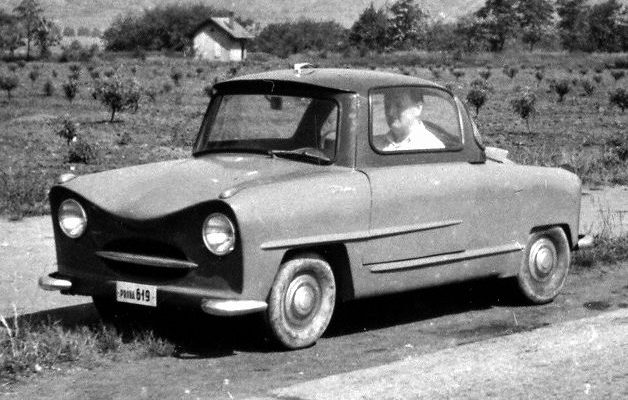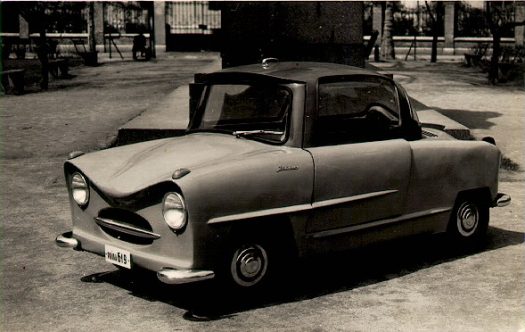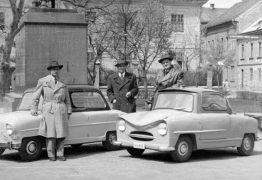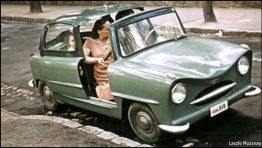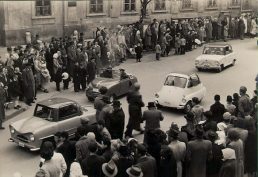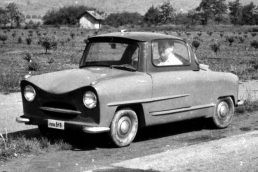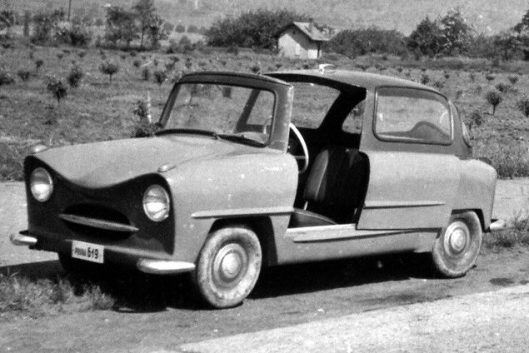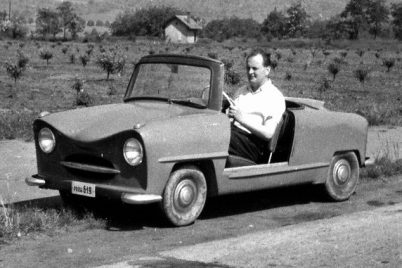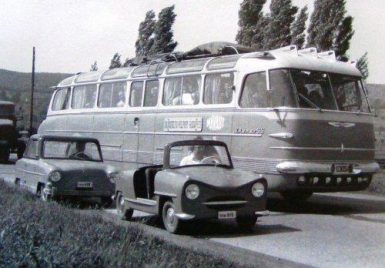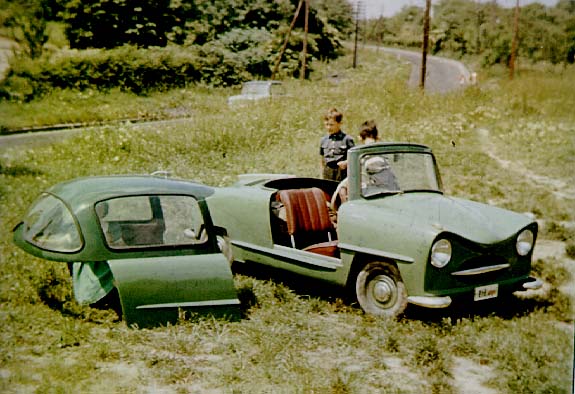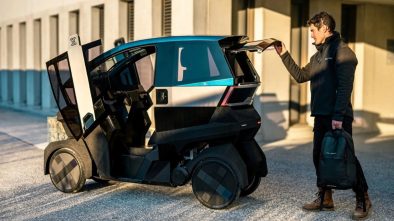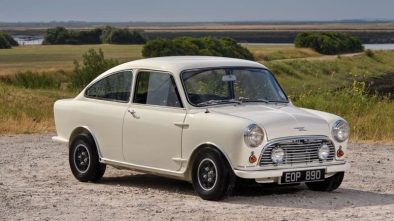Balaton
After Schadek János had lost interest in his “child”, the Úttörő, the prototype was sent to Székesfehérvár Motor Repair Company. Their excellent team of professionals was known throughout the country: only the best craftsmen were employed. With the decline of the aircraft repair industry, they had to switch profiles. They were the ones most skilled in machining aluminum. That’s why in 1955 the Ministry of Metallurgy and Engineering choose this plant where they could make prototypes of a miniature car and test thr production capabilities.
After the selection was made the Ministry sent a three-member team to coordinate the work and assist with the execution. Two of them were former aviation designers: Pál Kerekes and id. Ernő Rubik, and the third person was Géza Bengyel which was connected with Danuvi motorcycle factory. In addition to the professionals, an Italian Isetta, a German Messerschmitt Kabinenroller and the Hungarian Úttörő was sent to Székesfehérvár. There was a Goggomobile in the country at the time, and since it had an engine of just 250 cm³ as well as the Pannonia motorcycle, it became the benchmark. By the beginning of 1956 Székesfehérvár Motor Repair Company made two small cars, the Alba Regia and the Balaton.
The Balaton microcar was developed by Zappel “Csöpi” József aircraft engineer. It got an aluminum body with a Pannonia 250 motorcycle engine. It’s power was just 8 hp, almost twice less than 18 hp engine of the Goggomobile. The gearshift was borrowed from Isetta, reverse gear from Messerschmitt: before reversing, when the car stopped, a button should be pressed and the two-stroke engine began to rotate in the opposite direction. The wheels came from the tail of an aircraft.
The door of the Balaton opened to the rear, similarly to the aircraft cabin. The wheel suspension was designed by Ernő Rubik, who resolved the suspension with rubber brackets, just like the landing gear of his own gliders.
On May 1, 1956, at the local parade, four dwarf cars were roaring through the cobbled streets of Székesfehérvár: Alba Regia, Balaton, Isetta and Úttörő. At a ministerial evaluation at the KGM, the production of small cars and mopeds was judged to be unsuccessful so far, and so domestic tenders have to be launched and started on the basis of a series of applications. It has even been mentioned that Csepel Motorcycle Factory will be designated for production! Unfortunately, in October ’56, the best model, Goggomobil, was damaged during the fighting. By 1957, the Ministry had concentrated on the production of mopeds only, and the tender for the small car, which received 262-265 applications (sources differing in the number of applications), declared it ineffective.
